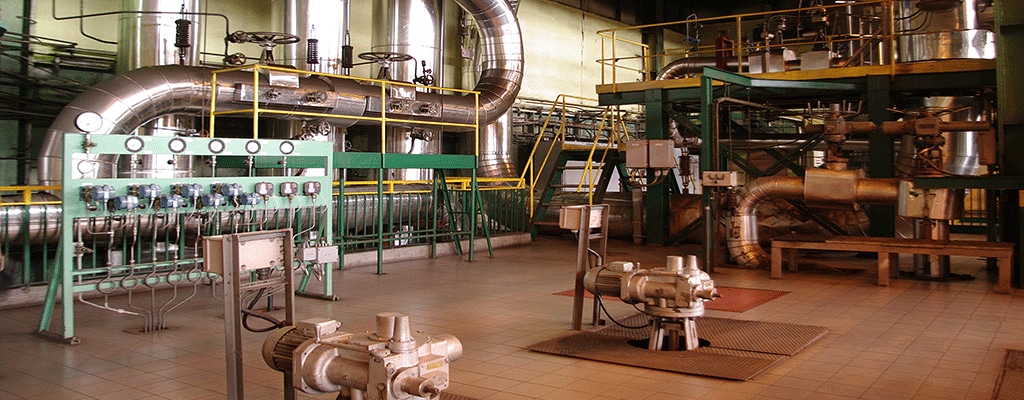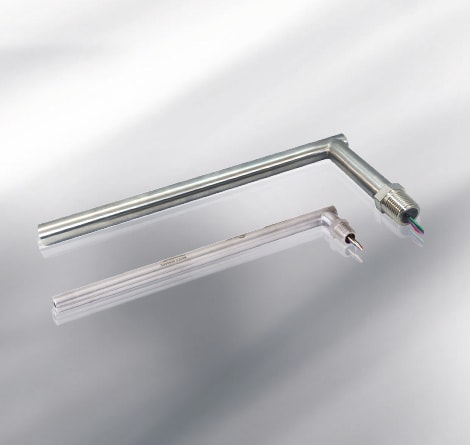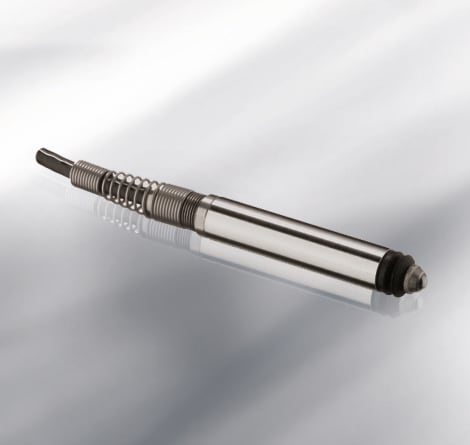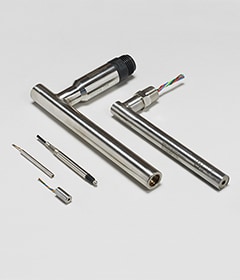
MECHANICAL DECISIONS
One of the primary factors in choosing an LVDT is determining the correct mechanical interface.
Both free-core and guided-core LVDT linear position sensors provide the benefit of infinite resolution, with each type offering models that can operate in harsh environments. While free-core LVDTs are generally less expensive and available in many ranges, they are more difficult to install than guided-core sensors. Available in spring and air-loaded cores, guided-core LVDTs are simpler to install but more expensive and not available in as many ranges. In addition to these differences, some applications are just better suited for a free-core LVDT, while others can benefit from a guided-core LVDT.
FREE CORE LVDTs
The moving element of a free-core LVDT is a separate tubular armature of magnetically permeable material called the core, which is free to move axially within the coil's hollow bore, and mechanically coupled to the object whose position is being measured. This bore is typically large enough to provide substantial radial clearance between the core and bore, with no physical contact between it and the coil for friction-less measurement and virtually infinite mechanical life.


APPLICATIONS
Free-core LVDTs are very versatile, non-contacting and robust, offering long-term reliability in harsh or hostile environments when constructed with the right materials. Frictionless operation translates into higher repeatability and resolution. Based on these properties, LVDTs are typically used in systems where cost of ownership, safety and high reliability are priorities, such as aircraft wing-flap indication, subsea applications, high-temperature steam valves, and power plant installations. Other suitable applications for free-core LVDTs include:
- Where the measured object is mechanically coupled to the reference surface or object (valves, hydraulic cylinders, actuators, strain testing machines)
- Measuring ranges above 4.00”
- Frequency response >10 Hz (vibration measurements)
- Critical measurement of delicate materials or highly elastic materials that allow the measured object to move with little to no mechanical resistance
GUIDED CORE LVDTs
Spring-loaded LVDTs, commonly referred to as dimensional gaging probes, incorporate a non-contacting, inductive position sensor, either an LVDT or half bridge, that includes a spring-loaded movable armature coupled to a shaft supported in a high-precision linear bearing. Most gaging probes have a maximum gaging range of ±0.50 mm to ±50.0 mm (±0.020 in. to ±2.00 in.), with resolutions of fractions of microns. When electronics are built into a spring-loaded assembly, there is no need for external electronics, making the mechanical setup of the sensor into automated machinery less complicated and more cost effective.


APPLICATIONS
Electronic gaging probes are commonly used in the dimensional gaging of manufactured parts, serving as important components of quality assurance systems. Suitable applications are where the measured object is NOT mechanically coupled to the reference:
- Gaging in heavy industrial: hermetically-sealed gaging probes can solve many of the problems associated with dimensional gaging in harsh environments
- High precision gaging: High precision gaging probes utilize a linear ball bearing assembly precisely fitted to a hardened and ground, non-rotating probe shaft to minimize radial play and the effects of side loading. This results in the probes' exceptional repeatability of 0.000006 inch (0.15 μm)
- Assembly Line Quality Measurements: Air extend/spring-retract gauging probes are recommended for these applications as they extend to make measurements and then retract so the probe is not damaged as product moves down the line
- Flatness measurements on plates
- Potential cross-axial movement of the measured object: For example, making a roundness measurement on a rotating part
- Thickness measurements
Spring Loaded LVDT - Automation
The GHSAR 750 spring loaded LVDT offers accurate position measurement in various applications including cylinder head manufacturing and testing

